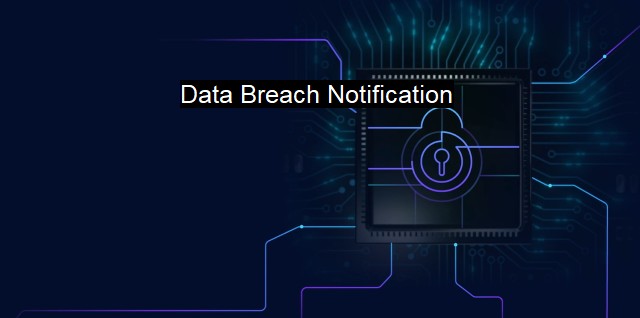What is Data Breach Notification?
Data Breach Notification: The Vital Aspect of Cybersecurity in Protecting Individuals and Businesses
Data breach notification, as the term suggests, is the act of informing individuals or organizations that their sensitive data, critical to their individual or business operations, has been compromised. This notification is aimed at getting each affected party informed to ensure they take the necessary steps to protect themselves from further harm.In the era of advanced technology, data breaches have become increasingly common due to the skyrocketing quantity of digital information stored by individuals, businesses, and organizations globally. Data breaches bear serious implications as they frequently lead to identity theft, financial losses due to fraudulent charges, and potential harm to the reputation of businesses and their relationships with customers. Notifying affected parties of these breaches can facilitate a rapid mitigation process and minimize damage.
Data breaches can occur in multiple ways. All actions revolving around data breaches fundamentally infringe on the principles of integrity, confidentiality, and availability, which form the foundation of cybersecurity.
Data breaches can occur through targeted attacks on secure databases or servers by exploiting system or security weaknesses. Hackers identify and take advantage of these vulnerabilities to gain unauthorized access to the data. Alternatively, data breaches can also occur through non-targeted incidents, such as when sensitive data is accidentally exposed due to a system glitch or human error.
Antiviruses play a significant role in the sphere of data breaches. Although they are notably known for safeguarding computer systems from harmful malware, antiviruses also guard against potential data breaches. Antiviruses can pinpoint vulnerabilities, block and eliminate malicious threats attempting to infiltrate the network, and repair the damage caused by malware. By doing so, they make it harder for cyber-criminals to gain unauthorized access to systems and perpetrate a data breach.
Data breach notification comes into play the moment a breach has been detected. This communication is a best practice – and sometimes a legal obligation – designed to protect the victims of data breaches from further attacks and losses. When organizations suspect or confirm a breach, they are expected to promptly notify affected individuals, relevant regulatory authorities, and occasionally credit-reporting agencies to help mitigate potential damage.
The procedure for sending these notifications is often regulated by internal policies and legal frameworks specific to a territory or sector. Some regions have stringent laws necessitating organizations to report data breaches, their scale, and suggestive solutions within a strict timeline after detecting the incident. under Europe’s General Data Protection Regulation (GDPR), firms have only 72 hours to file a report following the detection of a data breach.
Data breach notifications typically contain specific information. They often detail the nature of the breached data, the potential risks to the persons affected, and suggestions on actions the victims might take to manage the results of the breach. These actions could include changing passwords, monitoring for fraudulent charges, or contacting their financial institutions.
Clear, timely, and honest data breach notifications can be crucial in controlling the situation, decreasing potential harm, and regaining trust. They underscore the gravity of data security and reinforce the importance of employing robust cybersecurity mechanisms reinforced by high-quality antivirus software. These interventions collectively help protect sensitive data from unauthorized access and make the digital environment safer for all users.
Data breach notification is an essential element in the realm of cybersecurity and antivirus for various reasons. Driving accountability and action from organizations responsible for the data held is of utmost importance. As we venture further into the digital age, the obligation for implementing and upholding strong cybersecurity measures – and in the unfortunate event of a breach, transparent communication – will only rise in importance.

Data Breach Notification FAQs
What is a data breach notification?
A data breach notification is a legal requirement that obligates organizations to inform their customers or users when their sensitive or personal data has been compromised in a cybersecurity incident.What kind of information is typically included in a data breach notification?
A data breach notification typically includes the type of data that was compromised, the scope of the breach, the steps the organization has taken to mitigate the harm caused, and information on what the affected individuals can do to protect themselves.When should an organization issue a data breach notification?
An organization should issue a data breach notification as soon as they become aware of the breach. The notification should be issued promptly to minimize the damage caused by the breach and to allow affected individuals to take swift action to protect themselves.What are the consequences of failing to issue a data breach notification?
Failing to issue a data breach notification can result in legal and financial repercussions for an organization. The organization may face fines and penalties, legal action from affected individuals or regulatory bodies, damage to their reputation, and loss of customer trust.| | A | | | B | | | C | | | D | | | E | | | F | | | G | | | H | | | I | | | J | | | K | | | L | | | M | |
| | N | | | O | | | P | | | Q | | | R | | | S | | | T | | | U | | | V | | | W | | | X | | | Y | | | Z | |
| | 1 | | | 2 | | | 3 | | | 4 | | | 7 | | | 8 | | |||||||